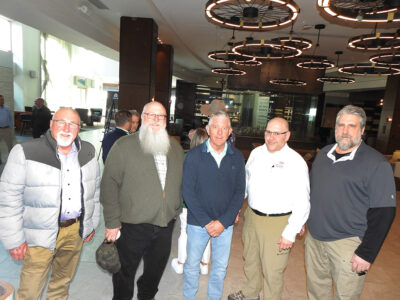The Convention on International Trade in Endangered Species of Flora and Fauna (CITES) recently met in France, and the next major gathering – the Conference of the Parties (COP) – will take place in Panama in November. International Wood Products Association (IWPA) staff was present in France, and will be in Panama, reflecting the level of importance we place on engaging in the CITES process.
Substantive changes to CITES, such as adding new species to the appendices or fundamental reforms to its implementation, can have far reaching impacts on trade in wood products. However, because the CITES operating process is relatively intricate – it covers trade in wildlife (e.g. elephants, rhinoceroses, alligators) in addition to trees and other plants – and is administered by a Secretariat based in Geneva, Switzerland, its importance may not be readily apparent.
What Is CITES?
CITES is a United Nations convention, chartered in 1975, whose aim is “to ensure that international trade in specimens of wild animals and plants does not threaten the survival of the species.” Parties (countries) and observers (groups like IWPA) gather periodically to review implementation activity and discuss reports, data, and trends around international trade in animals and plants, and products therefrom, and take action on regulating that trade, if necessary.
The Conference of the Parties is the most consequential meeting of CITES and occurs about every three years. There are also the Plants, Animals, and Standing Committees, which meet roughly once per year, and additional Working Groups that meet in the intervening time. While the COP is where the big decisions are made, the groundwork is laid in the discussions of the Committees and Working Groups.
Why Does CITES Matter?
These continual discussions are focused on the conservation of plants and animals determined to be threatened or endangered. Depending on the extent of the threat to the species, CITES parties will propose that species be listed in one of three Appendices, with trade being most restricted on species listed in Appendix I and Appendix II, and less so for those listed in Appendix III.
If a species is listed in Appendix II, there are rather significant permitting requirements for its import and export. While permits aren’t prohibitive in and of themselves, they require time and additional steps, so there are clear impacts to the listing decisions for traders in wood products. A recent example of an impactful listing was the decision to list in Appendix II all species in the Dalbergia genus (Rosewood).
How Are We Engaging?
Currently, the convention is looking at taking action on Pterocarpus erinaceus (African Rosewood) as it did on Dalbergia. Proposals for listings of additional popular wood species at the COP in November is likely. As such, we are continually monitoring for such listing proposals, evaluating the arguments for doing so, and working with our government and private sector partners to engage accordingly.
With numerous factors incorporated into the designation of species and regulation of trade, it is imperative for all views to be considered during the deliberations in order. IWPA hopes to help achieve the optimal balance between conservation value and continuation of legal and nondetrimental trade. The wood products industry has a vested interest not only in the trade of wood products, but in the preservation of species from which they come. This is why IWPA prioritizes being an active participant at the most recent CITES meeting, and why we emphasize ongoing engagement in the CITES process.
Impacting The Wood Products Trade








